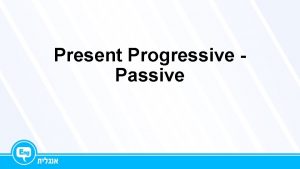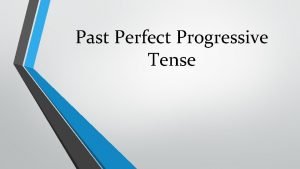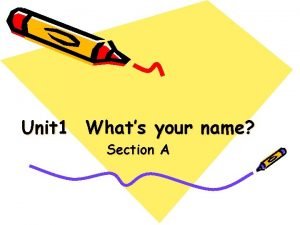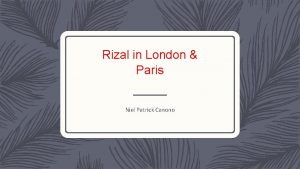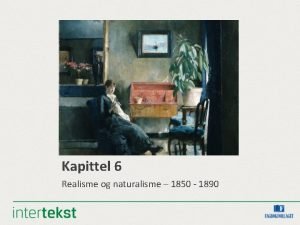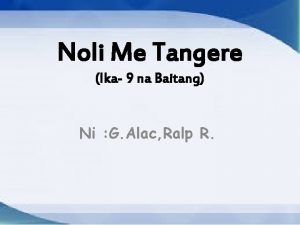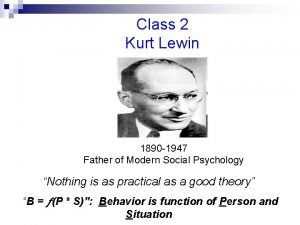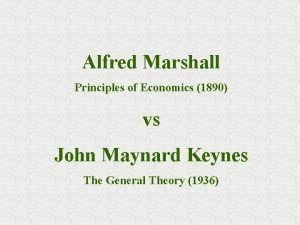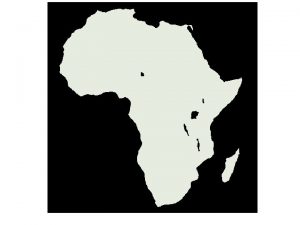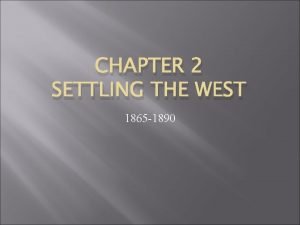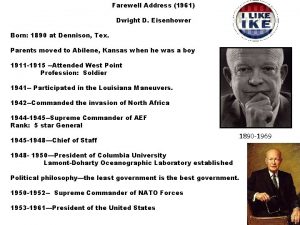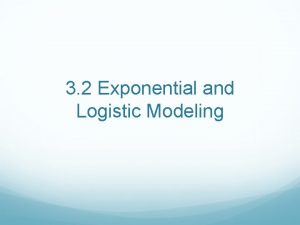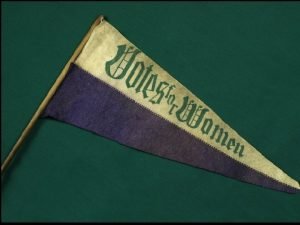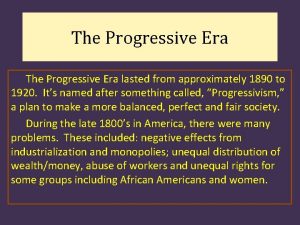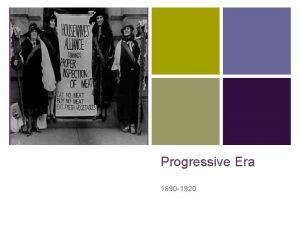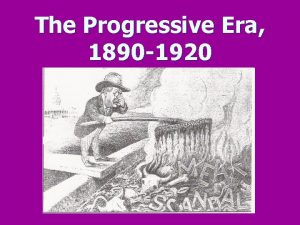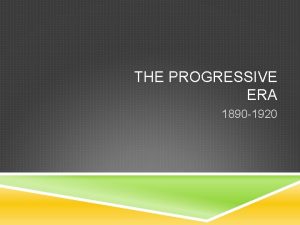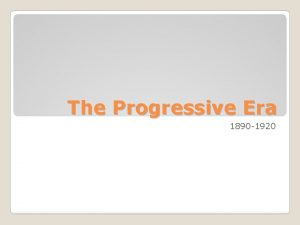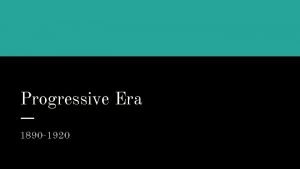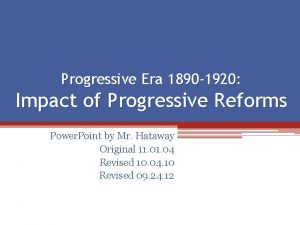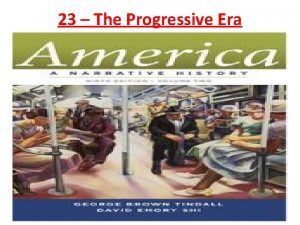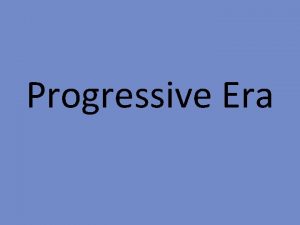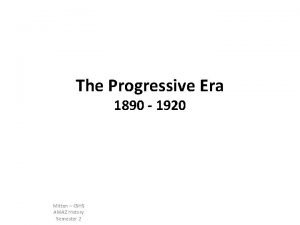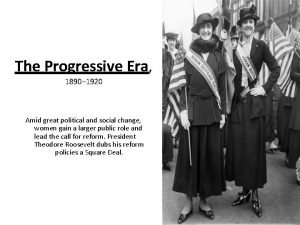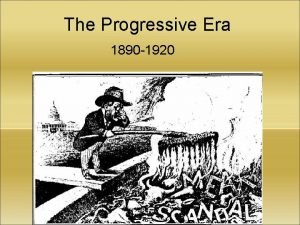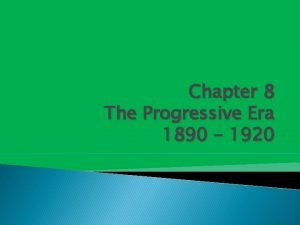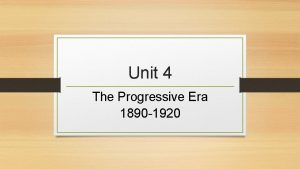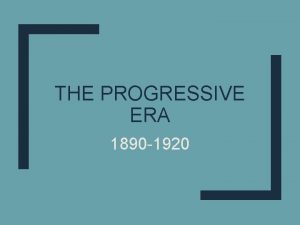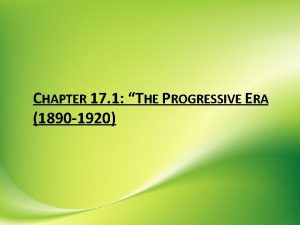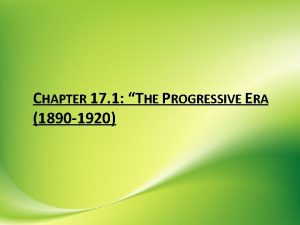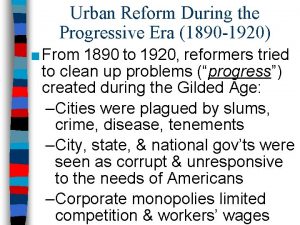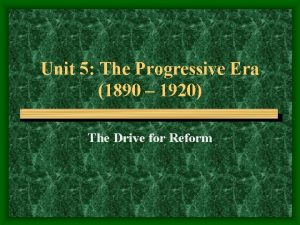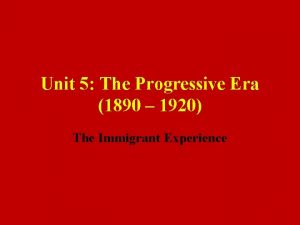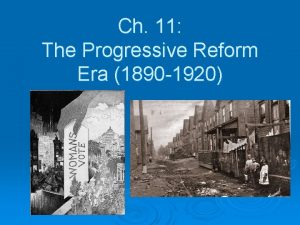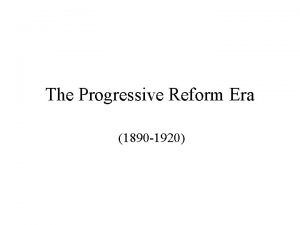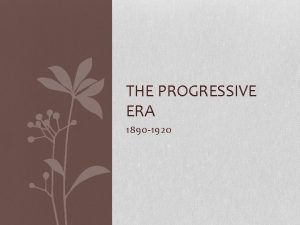The Progressive Era 1890 1920 Terms to Know


























- Slides: 26

The Progressive Era 1890 -1920

Terms to Know Progressivism: Movement to respond to societal problems caused by industrialization and urbanization. Socialism: a political and economic theory of social organization that advocates that the means of production, distribution, and exchange should be owned or regulated by the community as a whole i. e the government. Muckracker: Investigate journalist who uncovers to exposes corruption and exploitation in government or business. Jacob Riis: Muckraker who documented the living conditions of the urban poor. Lincoln Steffens: Murckraker who documented corruption in urban government. Jane Addams: Founder of Hull House and leader of the settlement house movement.

The Progressive Era: An Overview The progressive era was a period of many movements to establish social equity and remove embedded corruption in urban environments. The most impactful movements were progressivism and socialism. Progressives wanted to deal with the problems of v Corrupt political machines v Public services v Monopolies, oligopolies and trusts v Women’s Suffrage

Overview Continued Socialists wanted many of the same thing as progressives but they had a different view on how to obtain them. Socialists wanted government to own resources and major industries to benefit the population while progressives wanted more regulation of these industries.

Targeting Corruption The Spoils System was a main reason for the widespread corruption. v The Spoils System rewarded political supporters with jobs and influence. This type of political working is called a political machine. v Federal positions were often occupied by unqualified people. v Officials hired under the spoils system often used their position to further line their pockets

William M. Tweed William Tweed better known as Boss Tweed ran the Tammany Hall political machine in New York. Boss Tweed’s group controlled the police, the courts and the newspapers. He was convicted for collecting millions in illegal payments from companies doing business with New York City At the height of his power Boss Tweed was the director of the Erie Railroad, the Tenth National Bank and the New York Printing Company. He was also the third largest landowner in New York City.

The political cartoon to the right illustrates how governmental officials were open to taking bribes, kickbacks and other unlawful income for overlooking violations of the law by big business and the rich.

Targeting Corruption Continued The Pendleton Act was passed in 1883 under President Chester Author; establishing the Civil Service Commission. This Commission required examinations for federal jobs to help ensure qualified personal for the positions. The Pendleton Act was a vital tool in ending the Spoils System. Muckraker Lincoln Steffens series of articles called “The Shame of Cities” brought greater public awareness to the corruption in the local governments of many cities including New York City.

Monster Monopolies

Monster Monopolies

Monster Monopolies A monopoly is a company with exclusive control of a market or service or a control that allows the manipulation of prices. In order to maximize profits these big businesses paid low wages, demanded long hours and provided very poor working conditions. Monopolies had a lot of political influence and so their practices were largely overlooked by government. Muckrakers like Ida Tarbell helped expose their practices which led to legislation being passed to control them

Monster Monopolies The Sherman Anti-Trust Act was passed in 1890 in order to regulate big business. The monopolies were able to continue practices however with the government using the Sherman Act to target labor unions instead of the monopolies. It was not until the progressive movement became stronger in the early 1900’s that the Sherman Act began to be applied to monopolies.

Oligopolies An oligopoly is when a few large companies are able to influence and manipulate prices of a particular market. The railroads had formed a powerful oligopoly by the end of the 1800’s The Interstate Commerce Act was passed in 1887 regulating railroad prices. The act set up the ICC, Interstate Commerce Commission to oversee the railroads and later trucking industries.


Unsafe Working Conditions & Child Labor Working conditions during the industrial revolution and the progressive era were often hazardous. In the 1900’s the U. S had the highest rate of work place accidents. In order to cut costs and maximize profits child labor was utilized. v 18 percent of all workers were under the age of 16 in 1900. v In southern cotton mills 25 percent of workers were under 15 years old and half of those under 15 were under 12.

Child Labor Continued Children would often work the same shifts as adults and be payed less money. In 1904 the National Labor Committee was organized. This committee was instrumental in passing child labor reform laws. The committee used photography as seen on the right to dramatize the conditions of child labors to help sway public opinion. Leaflets, pamphlets, and mass mailings were also utilized to bring awareness to the child labor problem.

Pictured above is 7 year old Ferris who was a newsboy or “newsie”. Source: Lewis Hine/Library of Congress.

Child Labor Continued… Textile mill workers in Newberry South Carolina December 1908 Adult workers were often paid less than 8 dollars a week and child laborers from 7 dollars to as little as 2. 64$ per week. Source: Lewis Hine/Library of Congress.

Child Labor Continued… Camella Teoli was a thirteen year old textile mill worker in Lawrence Massachusetts during the Textile mill worker riots. The riots drew the attention of Congress and camella was one of the child laborers called to testify. v Well, I used to go to school, and then a man came up to my house and asked my father why I didn’t go to work, so my father says I don’t know whether she is 13 or 14 years old. So, the man say you give me $4 and I will make the papers come from the old country saying you are 14. So, my father gave him the $4, and in one month came the papers that I was 14. I went to work, and about two weeks got hurt in my head. The machine pulled the scalp off. Source: oercommons. org


Reform Initiatives Progressives fought for reform in a number of ways. One of the ways was to increase the peoples direct control of electing officials. Wisconsin did away with having candidates chosen by party bosses and state conventions in favor of direct primaries where voters choose candidates. Oregon instituted important reforms such as initiatives, referendums, and recalls.

Initiatives were placed on ballots in state elections. It was the people’s way of being able to pass legislation. Referendums allowed the people to vote on laws passed by the legislature, giving them further voice in government. Recalls allowed voters to remove elected officials they thought were not doing a good job.

The th 17 Amendment The 17 th Amendment was passed in 1912 and ratified in 1913. It legislated for the direct election of senators by the public. This gave citizens more direct input in government as senators would have to campaign promising to bring the changes the public wanted. The 17 th amendment was a result of progressives advocating for more public involvement in selection of representatives.

Progressive Presidents Theodore Roosevelt became president in 1901 after the assassination of President Mc. Kinley. President Roosevelt used the Sherman Anti-Trust act to break up trusts that were illegally limiting trade. He broke up railroad trusts and monopolies like Northern Securities and also targeted monopolies and trusts in the beef, oil and tobacco industries. Due to his work against trusts, President Roosevelt became known as a “Trustbuster”

The Square Deal Roosevelt ran for president in 1904 promising the people a Square Deal. The Square Deal was his plan for progressive reform. The Square Deal had three man policy goals known as the Three Cs: Control of corporations: Exemplified by targeting corporations using the Sherman Anti-Trust Act. Conservation of resources: Roosevelt formed the National Conservation Commission and National Forrest Service setting aside millions of acres to make Americas first Wild Life Sanctuaries Consumer Protection: Shown by supporting such acts as the Meat Inspection Act and the Pure Food and Drug Act

Progressive Presidents Continued William Howard Taft was elected after Roosevelt. He continued many of Roosevelt’s policies such as breaking up trusts. Roosevelt however did not like Taft because he altered conservation policies to favor big business and failed to lower tariffs.
 Know history know self
Know history know self Normalizing flow
Normalizing flow Nothing formed against me shall stand song
Nothing formed against me shall stand song Progressive passive
Progressive passive Past perfect vs past progressive
Past perfect vs past progressive Present perfect tense function
Present perfect tense function Unit 1 what's your name
Unit 1 what's your name Electrician terms to know
Electrician terms to know English city fight against
English city fight against Riconoscimento degli oggetti
Riconoscimento degli oggetti Timeline ng pagsulat ng el filibusterismo
Timeline ng pagsulat ng el filibusterismo Naturalismen drama
Naturalismen drama The population of smallville in the year 1890 was 6250
The population of smallville in the year 1890 was 6250 Paghahambing ng noli at el fili
Paghahambing ng noli at el fili Kurt lewin (1890-1947)
Kurt lewin (1890-1947) Alfred marshall principles of economics 1890
Alfred marshall principles of economics 1890 1890 computer
1890 computer Old imperialism vs new imperialism chart
Old imperialism vs new imperialism chart Pagkokontrast kahulugan
Pagkokontrast kahulugan Penholder tutuşu
Penholder tutuşu Settling the west 1865 to 1890
Settling the west 1865 to 1890 Kirjanik 1886-1971
Kirjanik 1886-1971 Born 1890
Born 1890 The population of smallville in the year 1890 was 6250
The population of smallville in the year 1890 was 6250 What is muckraking journalism
What is muckraking journalism Progressive era
Progressive era The progressive era lasted from
The progressive era lasted from



